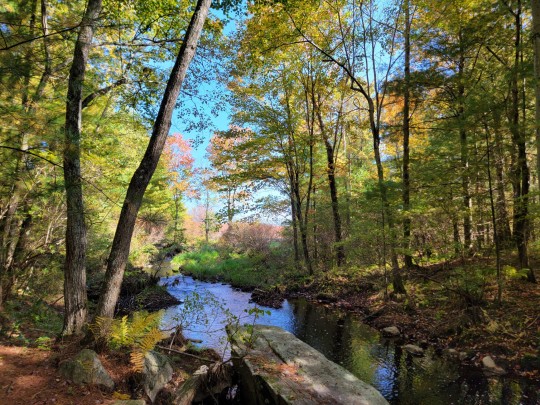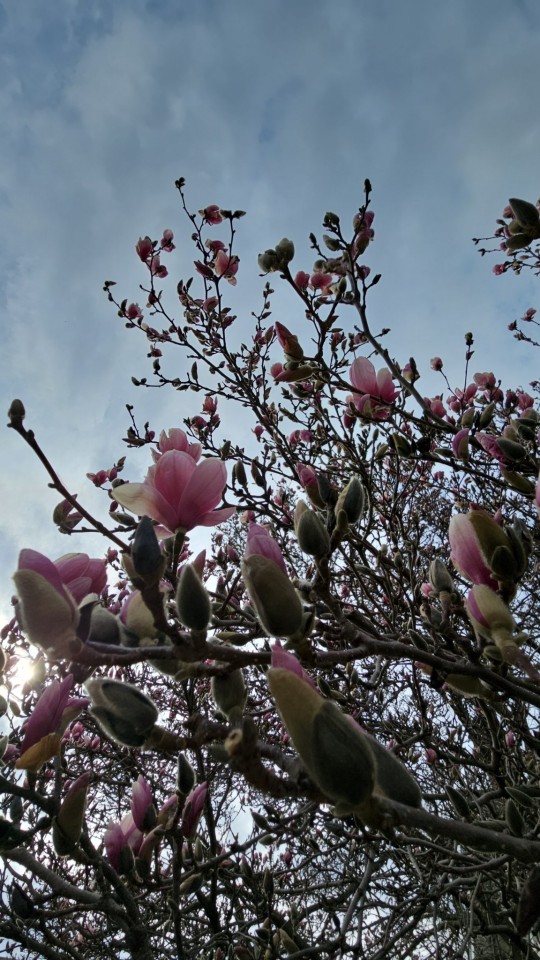#Red Maple
Explore tagged Tumblr posts
Text

Red maples are starting to pop down in this of the woods.
#illustration#jada fitch#art#maine#watercolor#painting#drawing#nature#flowers#botanical#red maple#maple#springtime#spring#average rubrum#watercolor painting#sketch book#sketch#red maple flowers#tree
2K notes
·
View notes
Text

Part of an exhibit that autumn curated along the canal path.
244 notes
·
View notes
Text


Two Mile Run under Trees - October 1st 2023
#nature#original phography#photographers on tumblr#forest#autumn#fall#pennsylvania#the poconos#red maple#hemlock#creek
1K notes
·
View notes
Text



Red maples near peak bloom
#landscape#landscape photography#nature#nature photography#naturecore#photography#trees#woods#forest#red maple#maple#acer#acer rubrum#flowers#wildflowers#march#spring#kentucky
81 notes
·
View notes
Text










God I love spring.
#Flowers#lets see#violet#dandelion#grape hyacinth#speedwell#bittercress#ornamental cherry#red maple#maple#apple blossom#juniper
50 notes
·
View notes
Text















Autumn on Snake Hill.
Elevation makes a huge difference in the Central Appalachians. Canaan Valley was at peak color almost two weeks ago. A thousand feet lower, at Snake Hill Wildlife Management Area, the leaves are just starting to approach peak. From top: red maple leaves drape fan clubmoss; the white-glazed, blue-purple berries of common greenbrier, an important food source for wildlife in the fall and winter; oldfield aster, also known as frost aster; milkweed pods release their precious seed; goldenrod gone to seed; the blue-black berries of mapleleaf viburnum, whose blushing red leaves are one of autumn's great joys; the brilliant yellow foliage of wild yam; the fiery red bolts of sourwood's dying flame; red oak burning away at the trail's edge; eastern teaberry loaded up with its distinctive red berries; a gorgeous Maryland golden-aster, one of the last beauties standing before the frost; and a spotted cucumber beetle, which despite its innocent appearance is a bane of late season gardens.

#appalachia#vandalia#west virginia#wildflowers#flora#fall#autumn#leaves#foliage#insect#snake hill wildlife management area#chestnut ridge#fan clubmoss#red maple#common greenbrier#common milkweed#canada goldenrod#mapleleaf viburnum#wild yam#sourwood#red oak#eastern teaberry#maryland golden-aster#spotted cucumber beetle
104 notes
·
View notes
Text

Tamarack, Red Maple, White Pine (1902).
New York Fish and Game Commission.
University of Washington
Wikimedia.
189 notes
·
View notes
Text




Oirase Gorge, Japan
#autumn blog#pretty#beautiful#nature#autumn#fall#japan#red maple#maple tree#red leaves#autumn leaves#autumn in japan
20 notes
·
View notes
Text

Fall colors at the Koishikawa Korakuen garden in central Tokyo — ranggapb
#tokyo#japan#red maple#Photography#Autumn#Autumn Aesthetic#Autumncore#Fall Aesthetic#Autumn Cozy#Fall Blog#Autumn Blog
52 notes
·
View notes
Text



#nature#trees#sky#magnolia#red maple#maple#photography#nature photography#weeping forsythia#flowers#blue sky#spring#midwest#midwestern aesthetic#aesthetic
52 notes
·
View notes
Text
A few seconds at around 8:30 this morning. The next two weeks are going to be amazing for leaf color in parts of eastern Pennsylvania. There are bluebirds among other birds singing in this video.
#pennsylvania#landscape#geopsych video#october#autumn#autumn foliage#autumn colors#bird song#red maple
491 notes
·
View notes
Text


Plant Profile: Red Maple - Acer rubrum
If you live in America you've probably seen a red maple before, this versatile little beast is one of the most ecologically widespread and common tree species in the east.

Let's start with the name: Why is it called Red Maple? The name refers to the beautiful ruby red spring buds/flowers (Image 1: Red Maple swamp West Milford, NJ) in addition to the vibrant fall colors. Suburbanites often confuse 'Japanese' maples as "red maples" due to the leaf hue but unlike that cultivated variety, Acer rubrum has green leaves and will preform very differently, angry clients sometimes 'buy the wrong tree' then make it YOUR problem.
Red maples are very variable within their geographic range, in some forests they can occupy a dominant understory position, some they are dry mountain dwellers, while in others they are niche successional wetland species but in most cases they exist as a 'short' lived tree usually dying before 100 years of age (Image 2: 150 year old specimen, Chester County, PA). These phenological differences can be genetic quirks of an isolated population or just occupying an available place.


Quick description on how to identify: Red maples are a fast growing deciduous tree species usually free of branches for about half it's height (reaching around a hundred feet). The bark itself is usually a smooth darker grey when young becoming lighter, randomly furrowed, ridged and scaly at maturity, in wetland environments it's not uncommon to see a lime green lichen present on its bark (Image 6). Twigs are usually purplish with redder new growth (Image 4). Buds and flowers are usually fully red (Image 3) and samaras (cute helicopter seeds) have red and green tints and are quite small compared to other American maples. These trees are usually unisexual (flowers are male or female, some pollinated female flowers image 3) though some have both sexes on the same tree and have been known to change genders. The leaf of a red maple (image 5) is pretty variable in proportions but has 3 very distinct lobes (sometimes 5 lobes) and very toothy, opposite placement and will create the most vibrant red color in fall fading slowly to yellow sometimes.
Within its native range red maple has a few 'subspecies' (Swamp red maple var. drummondii whose leaf has hairy undersides and Carolina red maple var trilobum which has a smaller 3 lobed leaf) but not many look alikes of other species. Mountain maple (Acer spicatum) has similar leaves but is a shrub present in the Appalachias and anywhere north of New York. Amur maple is also similar but this is usually restricted to gardens and has a proportionally long leaf.

The native range of red maple encompasses the entire Eastern United States with a southwestern limits in East Texas and a northwestern limit in Minnesota extending eastward with a northern limit in Newfoundland. I've personally seen this tree at both limits of its range (the Everglades and Quebec) and the further south one goes the more restricted to swamps and streams, conversely the further north the less restricted to wetlands it is (Image above: Red Maple on right in Catskills Mountains).

Habitat: Red maple is relatively dominant in New England-Mid Atlantic Wetlands, every tree you see with green lichen is a red maple in the image above (Great Swamp,NJ). The key for red maple seedling germination is soil moisture, which is why the further north one goes the more common it is to find. Naturally Red Maple is not meant to be as dominate as it is, I often state colonialism influenced our modern forest cover in distinct ways. Fire suppression, Low lumber value, and Clear Cut Disturbance has allowed the tree to thrive. Early successional (fast growth/high seeding) and Late successional habits (shade tolerance) makes Red Maple a perfect candidate for 'domination'. This may seem like a looming biodiversity threat when in reality the tree regenerates forest loss extremely well, it's short lifespan and weak wood/shallow root system often allows hardier trees (in non-wetland conditions) to readily take over after several decades. Each image (above and below) I'm showing with near total Red Maple coverage was once farmland less than a century prior giving way to variable forest. Additionally Red maples are important food sources for early pollinators and it's seeds are probably one of the top early summer food sources for squirrels.

Future trends: It is unknown what the future holds for Red Maples, With climate change increasing heavy precipitation events and late spring droughts may impact seedling success, though the tree is hardy in floods and dry periods. The Image above actually just experienced a large wildfire (the image is 6 month before burn) which will likely lead to a replacement with more fire tolerant species. Red Maples have thin bark and die easily when facing predation (Beaver herbivory visible mid-left above) and disturbances. On a positive note, according to a 2022 Boston University study warming trends are increasing the nutritional content (Nitrogen, Phosphorus, etc. concentrations) of its foliage which may be good for forest soil health.
Direct Uses: Red maple is considered a 'soft' maple and is often not used for much aside from veneer. Red maples have concentrated forms of tannin and the bark can potentially be used to make dyes though I have not tried this. Of direct human consumption occasionally people will use this species to derive syrup though unlike sugar maples they have a relatively short harvest period. The leaves are also toxic fodder for equine species (and humans), so don't use this in silvopasture!
Growing Red Maple: Thousands of red maple seedlings usually take over my beds and die within the year, occasionally I'll take a sapling for my personal nursery. I've found that the tree performs extremely well in partial shade and has the potential to grow 2' a year once established. Once mature, not much will survive around the trunk due to it's shallow roots.

Condition and Landscaping: Red Maple is a catch-22 in landscaping: it grows fast, has great color, it can thrive in bad conditions like flooding, droughts, sidewalks, pollution, disease and major damage.... unfortunately they tend to carry these marks and branches can break easily. Many cities use red maple cultivars and hybrids guaranteed to have decent form, it's shallow roots prevent weed (and grass) growth around the trunk. European and west coast cities utilize a hybrid between silver and red maple (Acer x freemanii) as a common hardy street tree. There are two cultivars I will recommend: 'Brandywine' which has dense foliage and 'October Glory' which has deep red fall colors and seeds

Restoration performance: Red Maple makes an excellent forest edge species allowing its vibrant fall color to be fully enjoyed and producing dense foliage to protect the inner woods from drying sunlight (sapling in field above from the Poconos). They're best utilized in wetland restoration projects as they are quite prolific and survive long periods of standing water.
So this was my quick piece on maybe our most common tree, if you're in New England/the Mid-Atlantic in mid winter to spring look up for the characteristic red buds, they're waiting for the right day length to bloom!
11 notes
·
View notes
Text


Weeping forsythia and red maple
#weeping forsythia#trees#red maple#maple tree#spring#plants#nature#nature photography#photography#flowers#spring flowers
23 notes
·
View notes
Text

more tree
10 notes
·
View notes
Text

13 notes
·
View notes
